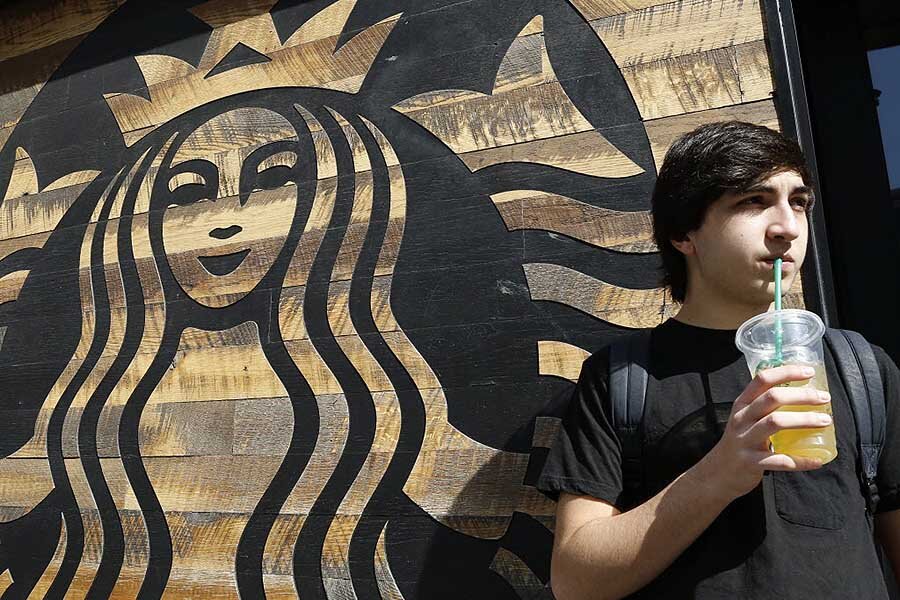Who is helped by suing Starbucks for using too much ice?
Loading...
Coffee has become the Goldilocks of class action lawsuits for being either too hot, too cold, or, in the $5 million case filed against Starbucks this week, not liquid enough.
A $5 million lawsuit against Starbucks filed in Chicago this week claims that a Venti cold drink (which includes iced coffee and other beverages) is advertised as having 24 fluid ounces, but actually includes only 14 ounces of the actual liquid, with the rest being ice.
Critics say that the same tort law used by consumer advocates to push for protection from dangerous practices is also being used to rack up massive class action pay-outs that may ultimately be passing litigation costs on to other consumers who are willing to just say, "Hold the ice."
The suit, filed by Stacy Pincus, alleges that "Starbucks is advertising the size of its Cold Drink cups on its menu, rather than the amount of fluid a customer will receive when they purchase a Cold Drink – and deceiving its customers in the process," as Chicago's WGN reports.
Starbucks spokesperson Jamie Riley says "We are aware of the plaintiff's claims, which we fully believe to be without merit."
"Our customers understand and expect that ice is an essential component of any 'iced' beverage. If a customer is not satisfied with their beverage preparation, we will gladly remake it," Ms. Riley said in a statement.
On social media, Twitter users tweeted their irritation over what many viewed as a frivolous suit.
These kinds of suits are made under tort law, which allows injured parties to file a civil lawsuit for alleged damages. Payments are meant to recoup costs, but also, often, to fix harmful or unfair industry standards and practices.
Consumer advocates, like five-time presidential candidate Ralph Nader, argue that such lawsuits "are good for America," as he writes in a Harper's essay this month.
"No decisions by the other two branches of government come close to being so clearly refereed, so open, and so subject to public review," Mr. Nader writes, contending that a trend of companies requiring customers to waive their liability "strip-mined and twisted tort laws against the very people most in need of them – those harmed who are without power and have been abandoned by both business and government." Civil cases, he says, help expose consumer hazards and prompt reform.
However, there is an epidemic of opportunistic and meritless suits against large companies that are resulting in price hikes for consumers, says Darren McKinney, the director of communications for the American Tort Reform Association (ATRA).
"These coffee lawsuits are generally brought under state consumer protection laws," Mr. McKinney tells The Christian Science Monitor in a phone interview. "Now, it seems like every other week, you read about someone suing over spilling coffee. These trial lawyers and their clumsy clients will find something to sue over hoping to cow the seller into a quick settlement of some sort which benefits the lawyers who concoct these suits far more than it's ever going to help a future consumer buying an iced coffee."
One example he offers is the recent class action suit against Subway that claimed the foot-long sandwiches were too short. A federal judge approved a settlement awarding $525,000 to plaintiffs' attorneys, and $500 to each of the ten plaintiffs.
"It also resulted in a five-dollar foot-long becoming a six-dollar foot-long thanks to litigation costs," Mr. McKinney points out. "Some of us are fine with our sandwiches and asking for ice on the side or less ice."
He also points to another recent case filed against Starbucks, this one alleging that the company is under-filling its lattes.
Mr. McKinney says that most of these suits are "copycats," the evolutionary result of the infamous hot coffee lawsuit of the early 1990s. A civil jury awarded nearly $2.9 million to Stella Liebeck, age 79 at the time of her accident, who suffered third degree burns after spilling a McDonald's beverage on her lap.
Editor's note: The original version of this story misstated the terms of Subway's recent settlement.








